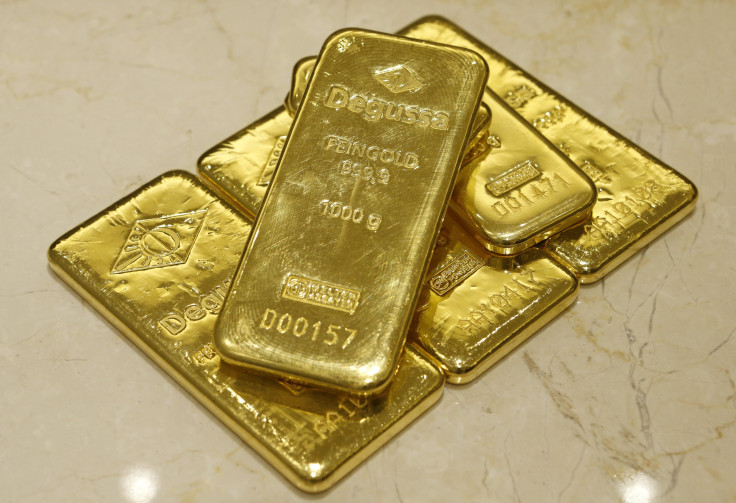Gold: A Tough 2014, As Analysts Cut Forecasts Amid Four-Month Lows In Price

Gold will face a tough 2014 if the sentiment of investment analysts is anything to go by. Gold prices should average $1,200 per ounce over 2014, down from an earlier predicted $1,325, wrote UBS AG (VTX:UBSN) precious metals analyst Joni Teves in a research note on Monday.
By 2016 and 2017, prices won’t enjoy much of a lift either, edging to $1,250 per ounce in 2016 and only $1,210 per ounce by 2017, UBS forecasts.
“The struggle for gold not only rests with the predominant selling interest amongst investors currently, but with limited positive catalysts looking forward; gold is unlikely to regain its former appeal,” she wrote.
A substantially more upbeat global economy and bullish stock markets mean that safe but relatively boring investments like gold will suffer, the note said. This has already been the case in 2013, and only a “very substantial change” in the macro picture next year is likely to support gold, wrote Teves.
“Gold has become old news, and investors are likely to be eagerly searching for new places to put their cash to work,” she said.
The eventual fall to $1,200 per ounce from an open of $1,220 per ounce in New York on Tuesday, won’t involve a simple straight decline, but will likely trace a turbulent path.
Prices could fluctuate widely, trading up and down for periods, as investors account for U.S. economic data, emerging market physical demand and investment fund outflows. Eventually, too, giant gold miners like Barrick Corp. (TSE:ABX) will have to take note, meaning that prices could eventually impact global gold production.
Potential support to gold, though, could come if the U.S. economy worsens significantly, or if there’s unusually severe political gridlock from Washington. A string of weak U.S. economic data could scare investors back into gold buying and lift prices, as World Gold Council executives and precious metals retailers believe. A more downbeat U.S. economy and weak employment could be gold's best bet.
Conversely, though, India is unlikely to strongly support gold in 2014, as it has in years past, thanks to government restrictions on gold imports. The country, which closely competes with China as the world’s largest gold consumer, has tried to cut gold consumption to narrow trade deficits this year.
Gold fell to a four-month low on Dec. 2, noted HSBC Holdings PLC (LON:HSBA) analyst James Steel in a Monday report, on the back of upbeat U.S. manufacturing data and a strong U.S. dollar.
Lagging U.S. Mint gold coin sales, at least on a monthly basis, indicate weak U.S. retail demand for gold, he added. Still, the U.S. Mint is set to solidly beat gold coin sales figures from last year.
Barclays PLC (LON:BARC) also echoed Teves’ gloomy analysis, in a note on Monday.
“Gold prices dipped below $1,250 per ounce last week and have struggled to gain traction despite the seasonally strong period for demand. External markets are lending little support to gold," they wrote. "Gold has sidelined a number of catalysts.”
More broadly, 2013 will likely be the second straight year where commodities as a whole are the worst-performing asset class for risk-adjusted returns, the Wall Street Journal reports. Commodities include natural gas, oil, and other metals besides gold and silver.
© Copyright IBTimes 2024. All rights reserved.












